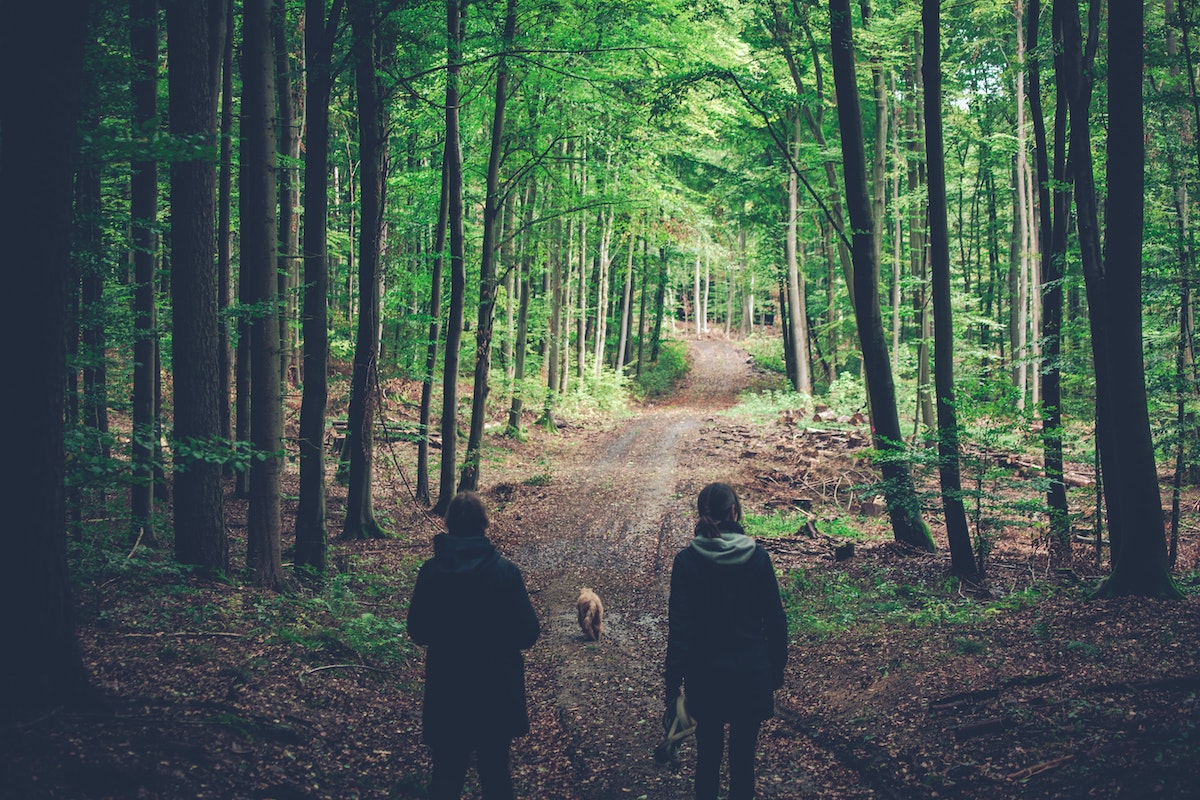
Photo by Chris Lutke.



Photo by Chris Lutke.

When the pandemic closures began in March 2020, non-essential places and outdoor recreational areas were shuttered to prevent the spread of a poorly understood, and deadly virus. Hiking trails, nearby parking areas and park entrances all closed. Since then, we have learned a lot about how the virus that causes COVID-19 behaves. We now know that being outdoors in large open spaces is low risk, especially if you are fully vaccinated.
The importance of time spent outdoors to our physical and mental wellbeing was never before so apparent. In the past year, research echoed that we need exposure to nature to feel happy, calm, and frankly, human. Studies on adolescents found that outdoor play and exposure to green spaces during the pandemic were associated with better mental health (Jackson et al. 2021) and physical activity protected against negative mental health impacts (Wright et al. 2021). Outdoor activity organizations and experts were compelled to issue recommendations to keep these spaces open, arguing that physical activity and green spaces may even protect against health conditions such as heart disease that increase the likelihood of worse outcomes from COVID infection (Slater et al. 2020).

During 2020 we saw how barriers to medical care resulting from the pandemic led to delays in diagnosis of more “typical” illnesses, such as tick-borne diseases (Novak 2021). While it would make sense that diagnoses would be faster given a heighten sensitivity and awareness of flu-like symptoms, the reliance on telemedicine may have prevented adequate triaging of and examination of patients. One case report described a man presenting with symptoms that initially appeared to be a COVID infection (Novak 2021). Lacking a rash at the time, he was not assessed for Lyme disease after a negative COVID test. As a rash and more symptoms, such as blurred vision and meningitis, finally developed he tested positive for Lyme disease. This man’s delayed diagnosis led to significant neurologic symptoms that thankfully subsided, but only after months.

As we enter our second warm season alongside COVID, remember that time in nature can be our medicine, but to also prepare for “normal” risks. Here in Illinois, a growing threat to humans and our furry adventure companions lurking along those greening trails are several types of ticks (Figure 1) (Gilliam et al. 2020); all of which may transmit various diseases to you or a pet.
Despite the old adage to “wear a hat to keep away ticks,” ticks do not fall from the trees. They either crawl up from the leaf litter or are waiting on knee-high vegetation to latch onto their next meal as it passes by. Ticks need blood to grow to their next life stage. After feeding they will drop to the ground to digest and grow into their next life stage. (Figure 3).
There are three main ticks of medical importance in Illinois (Figure 3) and a new tick is quickly establishing in several counties (Figure 2). Each tick is unique in the sense that its stages are active at different times of the year, in different habitats and each can carry different diseases (Table 1). The best defense is a good offense. Get to know your ticks and then make a plan to prevent bites this season.

I-TICK program https://vetmed.illinois.edu/i-tick/
CDC Tick page https://www.cdc.gov/ticks

Jackson S.B., Stevenson K.T., Larson L.R., Peterson M.N. and Seekamp E. Outdoor Activity Participation Improves Adolescents’ Mental Health and Well-Being during the COVID-19 Pandemic. International Journal of Environmental Research and Public Health. 2021; 18(5):2506. https://doi.org/10.3390/ijerph18052506
Novak, C. B., Scheeler, V. M., and Aucott, J. N. (2021). Lyme Disease in the Era of COVID-19: A Delayed Diagnosis and Risk for Complications. Case Reports in Infectious Diseases, 2021, 6699536. https://doi.org/10.1155/2021/6699536
Gilliam, B., Gronemeyer, P., Chakraborty, S., Winata, F., Lyons, L. A., Miller-Hunt, C., Tuten, H. C., Debosik, S., Freeman, D., O’Hara-Ruiz, M. and Mateus-Pinilla, N. (2020). Impact of Unexplored Data Sources on the Historical Distribution of Three Vector Tick Species in Illinois. Journal of Medical Entomology, 57(3), 872–883. https://doi.org/10.1093/jme/tjz235
Paddock, C. D., Sumner, J. W., Comer, J. A., Zaki, S. R., Goldsmith, C. S., Goddard, J., McLellan S. L. F., Tamminga, C. L. and Ohl, C. A. (2004). Rickettsia parkeri: A newly recognized cause of spotted fever rickettsiosis in the United States. Clin. Infect. Dis. 38:805-811
Phillips, V. C., Zieman, E. A., Kim, C.-H., Stone, C. M., Tuten, H. C. and Jiménez F.A. (2020). Documentation of the Expansion of the Gulf Coast Tick (Amblyomma maculatum) and Rickettsia parkeri: First Report in Illinois. The Journal of Parasitology, 106(1), 9–13. https://www.ncbi.nlm.nih.gov/pubmed/31958375
Slater, S. J., Christiana, R. W. and Gustat, J. (2020). Recommendations for Keeping Parks and Green Space Accessible for Mental and Physical Health During COVID-19 and Other Pandemics. Preventing Chronic Disease, 17, E59. https://doi.org/10.5888/pcd17.200204
Wright, L. J., Williams, S. E. and Veldhuijzen van Zanten, J. J. C. S. (2021). Physical Activity Protects Against the Negative Impact of Coronavirus Fear on Adolescent Mental Health and Well-Being During the COVID-19 Pandemic. Frontiers in Psychology, 12, 737. https://doi.org/10.3389/fpsyg.2021.580511
Dr. Heather Kopsco is a postdoctoral research associate and disease ecologist at the College of Veterinary Medicine where she investigates questions at the intersection of tick ecology and human and animal disease prevention, a path that emerged from her own experience with tick-borne illness. Beyond research she spends her time hiking, getting distracted by birds, and wrangling a 3.5 yr. old, two rescued pit-bull type dogs, and an ever-growing collection of houseplants.
Dr. Nohra Mateus-Pinilla is a veterinary Epidemiologist working in wildlife diseases, conservation, and zoonoses. She studies Chronic Wasting Disease (CWD) transmission and control strategies to protect the free-ranging deer herd’s health. Dr. Mateus works at the Illinois Natural History Survey- University of Illinois. She earned her M.S. and Ph.D. from the University of Illinois Urbana-Champaign.
Submit a question for the author